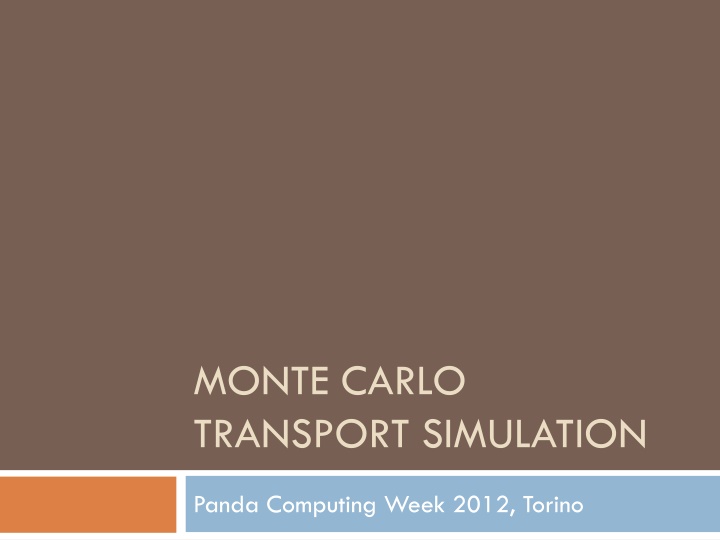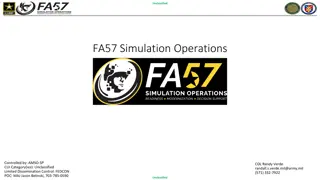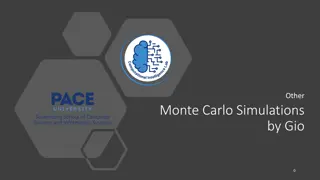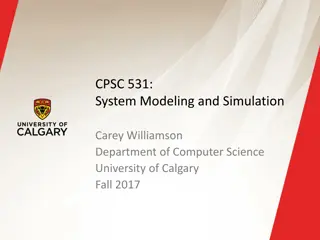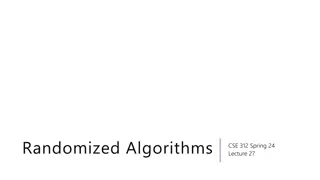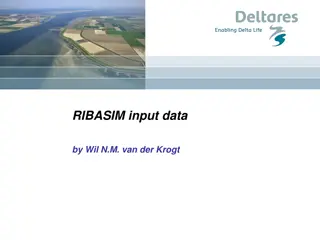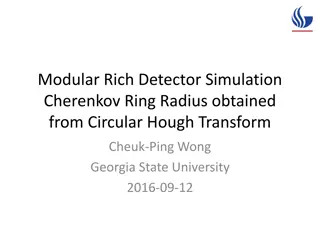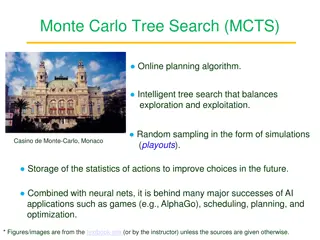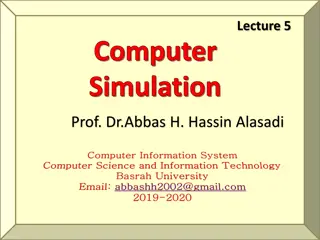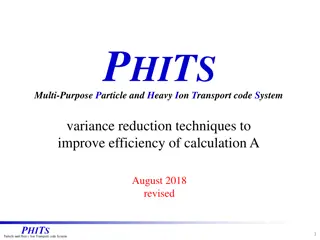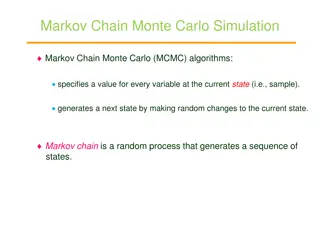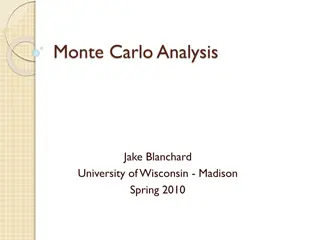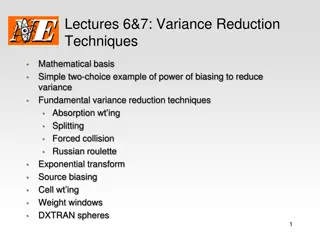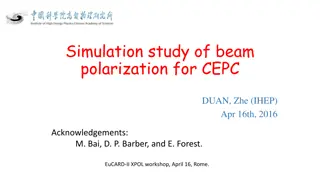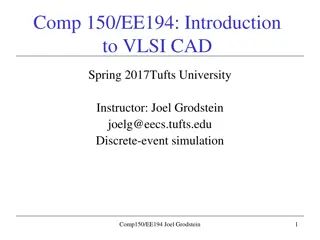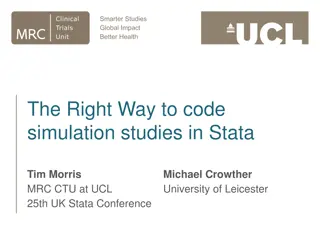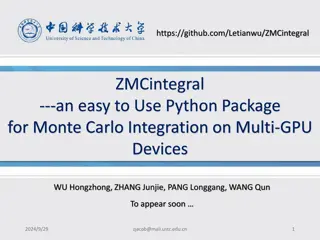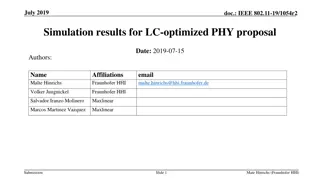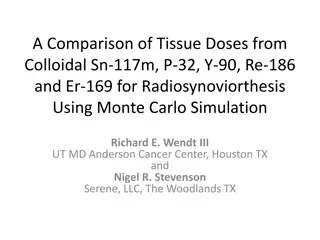Monte Carlo Transport Simulation
Monte Carlo simulation is a stochastic technique that uses random numbers and probability statistics to investigate and solve problems. In the context of transport simulation, a Monte Carlo program simulates the passage of particles through matter, involving geometry, transport, visualization, detector response, and user code. The simulation process includes initialization, defining materials and media, creating the experimental setup, processing events, and writing data to file. Variants like VMC offer interfaces to decouple user code from specific Monte Carlo implementations, allowing flexibility in choosing different Monte Carlos for the same user code.
Download Presentation

Please find below an Image/Link to download the presentation.
The content on the website is provided AS IS for your information and personal use only. It may not be sold, licensed, or shared on other websites without obtaining consent from the author.If you encounter any issues during the download, it is possible that the publisher has removed the file from their server.
You are allowed to download the files provided on this website for personal or commercial use, subject to the condition that they are used lawfully. All files are the property of their respective owners.
The content on the website is provided AS IS for your information and personal use only. It may not be sold, licensed, or shared on other websites without obtaining consent from the author.
E N D
Presentation Transcript
MONTE CARLO TRANSPORT SIMULATION Panda Computing Week 2012, Torino
What is a Monte-Carlo simulation? The expression "Monte Carlo method" is actually very general. Monte Carlo (MC) methods are stochastic techniques, meaning they are based on the use of random numbers and probability statistics to investigate a problem A Monte Carlo method is a technique that involves using random numbers and probability to solve problems. The term Monte Carlo Method was coined by S. Ulam and Nicholas Metropolis in reference to games of chance, a popular attraction in Monte Carlo, Monaco
What is a MC transport simulation? A Monte Carlo transport simulation is a program which simulates the passage of elementary particles through matter. [Geant3 User s Guide] In consists of the following parts: Geometry package Transport package Visualization package Detector response package User Code
How does a MC simulation work? Initialization Create geometry Define materials and media Create the geometrical setup of the experiment Define active sensitive volumes in the setup Define/Create particles and their physics properties Event processing Read one event from event generator Transport one event through the setup Cleanup to be ready for the next event Final Cleanup Write data to file
How does a MC simulation work? Quite complex dependencies User code implemented inside the MC framework Complete rewrite needed for new MC framework
How does VMC work? Use interfaces which decouple the user code and the concrete Monte Carlo Use different Monte Carlo s with same user code
MC transport in detail (1) Silicon detector Initialization done Transport package read event kinematics One particle at position (x, y, z) with momentum (Px, Py, Pz) Transport package get from geometry package the distance to the next boundary in direction of particle track Transport package get from physics package the distance where the next interaction in the medium happens Depending on the medium, the particle and the physical settings there are several physical processes to be taken into account Gold Target Particle
MC transport in detail (2) Silicon detector Assume particle is in vacuum, so no interaction Transport moves particle on the next boundary to be crossed Gold Target
MC transport in detail (3) Silicon detector Assume particle is in vacuum, so no interaction Transport moves particle on the next boundary to be crossed If one looks much closer, one can see that the particle is moved slightly inside the new volume Now the transport again checks for distance to next boundary and physical interaction Particle has an interaction inside the target (scattering) so the kinematic properties of the particle are updated Particle leave target without any further interaction. Gold Target Boundary Medium 1 Medium 2
MC transport in detail (4) Silicon detector Since particle is in vacuum again, it is moved across the next boundary This time we are in a detector (active medium) Detector response function is called for every step inside the detector which has access to the following information Position Momentum Energy loss PID Track length Time of flight Gold Target
MC transport in detail (5) Tracks are transported sequentially Two possible ways Put particle 1 on stack Put particle 2 on stack Handled differently by different MC In CbmRoot Save info when particle is entering a sensitive volume Sum up energy loss while inside sensitive volume Write complete MCPoint to output when particle leave sensitive volume Sensitive Volume 2 1 Geant 3 1: entering 1: exiting 2: entering 2: exiting Geant4/Fluka 1: entering 1: disappeared 2: entering 2: exiting 1: entering 1:exiting Only one MCPoint Second case handled wrong 2 MC points 3 MC points
